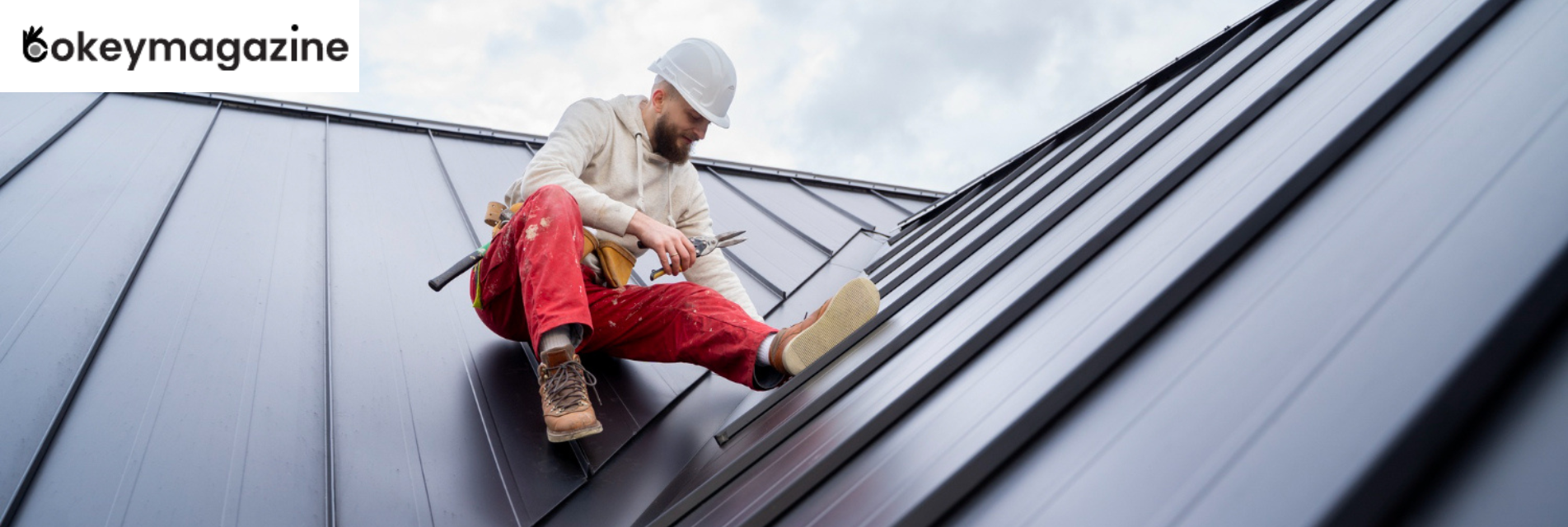
What Is The Best Way To Cut Metal Roofing Without Damaging It?
If you’ve ever dealt with metal roofing, you already know—it’s sturdy, it looks great, and once it’s up, you don’t have to think much about it for years.
But before you can admire a shiny new roof, there’s the part nobody loves: cutting the panels. That’s where things usually get a little tricky.
Unlike shingles or wood, metal doesn’t exactly forgive mistakes. You can’t just grab the nearest saw and hope for the best. The wrong cut leaves ugly edges, chips in the coating, or worse, panels that rust quickly than they should.
In that case, what is the best way to cut metal roofing without any damage?
So, if you’re planning a project, it’s worth knowing the right way to slice through those sheets without wrecking them—or your nerves.
Why It’s Not As Simple As It Looks?
The first time I tried cutting metal roofing, I figured, “How hard can it be?” Turns out, it’s not like trimming plywood. Metal panels are slippery, sharp, and strong enough to fight back if you’re careless. Use the wrong blade, and it’ll either chew up the sheet or send sparks flying everywhere.
On top of that, you’ve got to think about safety. Sharp edges, hot sparks, and those sneaky little shards that get everywhere—this is not a job for bare hands and flip-flops. Trust me, gloves and goggles aren’t optional.
As a result, consider hiring a roofing company to get the job done. In fact, if you are located in the United States, you can check out Cleveland roofing companies that offer metal roofing services without causing any damage.
What Is The Best Way To Cut Metal Roofing? The Tools That Actually Work
Different jobs call for various tools. There isn’t just one way that works best for everyone, but here are the ones most people rely on:
1. Tin Snips:
These are heavy-duty scissors for metal. They’re cheap, they work, and they don’t make much noise. The downside? Your hands will hate you if you try to cut more than a couple of sheets. Still, for small trims, they’re perfect.
2. Circular Saw With A Metal Blade:
When you’ve got a stack of panels to deal with, this is a lifesaver. The trick is to ensure the blade is designed for metal, not wood. Carbide-tipped blades are a solid choice. Just be ready for the noise, sparks, and the smell of hot metal.
3. Angle Grinder:
This tool is a wildcard. It’s handy for awkward spots and cutting curves, but it’s not exactly beginner-friendly. Keep a steady hand, because grinders love to wander off your line.
4. Electric Shears:
If you’re looking for cleaner cuts without the workout, electric shears are a step up from tin snips. They zip through panels quickly and don’t leave the edges looking like they’ve been chewed on.
5. Nibbler:
Strange name, but effective tool. A nibbler basically bites little chunks out of the sheet as it goes along. It’s slow but excellent for curves or fancy shapes. The only annoying part? You’ll be sweeping up those tiny metal confetti pieces for days.
What Is The Best Way To Cut Metal Roofing? Steps To Follow:
So without wasting time, let’s check out the steps to follow for cutting metal roofing:
- Start by measuring accurately and then mark a cutting line on the designated metal panel using a permanent marker and a measuring tape.
- Place the metal panel on a stable surface, such as a table, that will provide proper support during the cutting process.
- Use the right tool and blade as per your requirements to cut the metal panel. While doing so, ensure you are using the tool steadily and slowly along the marked cutting line.
- Once you are done cutting, use sandpaper and a metal file to smooth any rough or sharp edges for preventing rust and injury.
- Finally, apply touch-up paint ot sealant on the edges of the cut panel to protect it from corrosion.
Before You Even Start Cutting:
Here’s where most people go wrong—they just throw a sheet on the ground and start hacking away. Don’t do that.
- Measure carefully (seriously, measure twice).
- Mark your lines clearly with chalk or a marker.
- Secure the panel in place so it doesn’t slip during the cut.
- Face the finished side up, if possible, to avoid scratches that everyone will see.
Those five minutes of prep save you from ruining a whole sheet.
What Is The Best Way To Cut Metal Roofing? (Straight, Curved, And Tiny Cuts)
Not every cut is the same, so the tool choice matters:
- Straight cuts: If you’re trimming panels to length, a circular saw or shears are your friends. Go slow, keep the tool steady, and don’t force it.
- Curved cuts: Around chimneys or vents? Forget the saw—use a nibbler or tin snips. They’ll give you cleaner control.
- Small trims: Sometimes you just need to shave a corner. Don’t overthink it—grab the tin snips and be done with it.
Is It Safe To Cut Metal Roofing?
Look, metal roofing will cut you just as easily as you cut it. Gloves are a must. Goggles too. Long sleeves help if you’re using power tools, because sparks can and will find bare skin. And one thing people forget—clean up the mess. Those tiny shards on the floor are sharp enough to go straight into your shoes or even puncture a tire if you’re working in the driveway.
What Are The Common Mistakes People Make?
A few things I’ve learned (sometimes the hard way):
- Using the wrong blade—wood blades don’t belong anywhere near roofing panels.
- Cutting too fast—you’ll warp the sheet or scorch the paint.
- Guessing instead of measuring—it never ends well.
- Leaving sharp edges—file them down, or you’ll regret it later when you brush against the roof.
And It’s A Wrap!
Cutting metal roofing isn’t exactly “fun,” but it doesn’t have to be a nightmare either. With the right tool, a steady hand, and a bit of prep, you’ll get clean cuts that look professional and won’t compromise the life of your roof.
If you’ve only got a couple of cuts to make, tin snips are fine. Got a pile of panels? Go with shears or a circular saw. For curves, bring in the nibbler. And whatever you do, don’t skip the safety gear.
At the end of the day, it’s not about how fast you cut, but how well. Take it slow, do it right, and you’ll end up with a roof that not only lasts but also looks sharp.
Read More:


















Post Your Comment